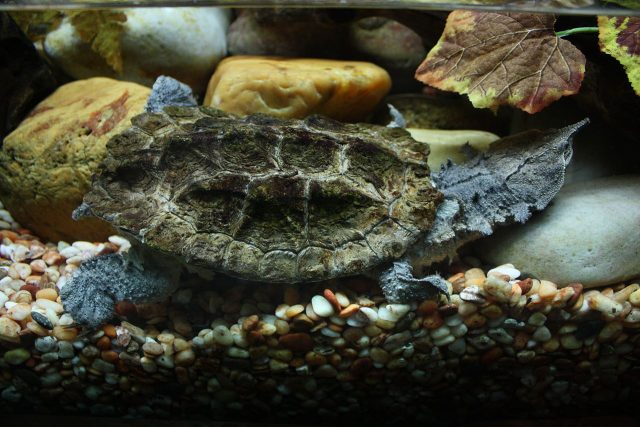Type the name of the breed you're looking for below
[wpdreams_ajaxsearchlite] Don't see the breed your're looking for? Click here and let us know!
Matamata Turtle
| Place of Origin and Range | The Mata mata, Mata-mata, or Matamata is a freshwater turtle found in South America, primarily in the Amazon and Orinoco basins. |
| Description | They have very rough carapaces, skin on fringes on the neck an chin, very heavy and flattened neck, triangular head and snorkel nose, make this an unmistakable turtle. |
| Morph Patterns Available | No |
| Adult Size | Can grow up to 15in(37.5cm |
| Accommodation | A filtered semi-aquatic cage with water temperature at 70-80'F(21-26'C), and a sloping ramp(driftwood, textured plastic or some other non-abrasive surface) leading from the bottom to an illuminated and warmed basking spot. Approx 90'F(32'C). 2 x 4 feet for an adult. Shallow water only, these turtles have trouble swimming. |
| Lifespan | Can live 30+ years |
| Feeding / Diet | These turtles mainly eat fish and tadpoles.There are a variety of foods which are universally accepted by turtles, which include earthworms, snails, slugs, grubs, beetles, and caterpillars. |
| Other Considerations | Watch for theses health concerns carefully with your turtle. Vitamin A Deficiency: Vitamin A is an important nutrient for your turtle’s health. It is found in his diet in the form of leafy green, orange or yellow vegetables, liver, and fish. If your turtle is not getting enough Vitamin A, he can suffer serious health problems. Always check to make sure that your turtle does not have swollen eyelids, as this is the main sign of a Vitamin A deficiency. Also, check for weight loss, nasal discharge and infected skin. Any of these symptoms could point to a deficiency. If you think your turtle may not be getting enough Vitamin A, you should take him to the veterinarian to get a firm diagnosis. Shell Problems: Your turtle’s shell is very important to his overall health. There are many potential problems that could occur, so you should be on the lookout at all times. Respiratory Disease: Respiratory infections have symptoms similar to vitamin A deficiency, including swollen eyelids and runny nose, so you should take your turtle to the veterinarian to get a proper diagnosis if you suspect either. More serious infections will be characterized by breathing through the mouth, mucus in the mouth, and wheezing. Always make sure your turtle’s environment has the proper amount of humidity, as this will help prevent respiratory problems. |



